Neural Network-Based Identification of Cloud Types from Ground-Based Images of Cloud Layers
Abstract
1. Introduction
- Constructing a ground-based cloud images dataset, known as the SSC, which is the first dataset to ensure roughly equal sample sizes for each cloud genera. The dataset comprises 1092 data samples, categorized into 10 groups.
- Various processing methods are employed to adjust the contrast and brightness of the images, thereby enhancing the texture of the clouds. By this approach, the efficiency of the model in extracting cloud texture is enhanced, and the model’s performance is improved.
- We employed a new evaluation method for assessing the performance of our model. The method involves categorizing clouds into three types based on their texture (cumulus, stratiformis, and undulatus). While this evaluation method is relatively uncommon in machine learning, it is crucial in the field of meteorology. In reality, these three types of clouds have varying degrees of impact on the climate, which is an important consideration when collecting cloud data [21,22].
2. Data
3. Method
3.1. Image Processing
- , contrast the left and right neighboring points of the pixel.
- , contrast the lower-left with the upper-right neighborhoods of the pixel.
- , contrast the top and bottom neighborhoods of the pixel.
- , contrast the upper-left with the lower-right neighborhoods of the pixel.
3.2. Model
4. Results and Discussion
- Whether the first three items of the classification result include the correct labels.
- Classification by cloud texture (divided into Stratiformis, Undulatus, Cumulus).
5. Conclusions
Author Contributions
Funding
Institutional Review Board Statement
Informed Consent Statement
Data Availability Statement
Acknowledgments
Conflicts of Interest
References
- Duda, D.P.; Minnis, P.; Khlopenkov, K.; Chee, T.L.; Boeke, R. Estimation of 2006 Northern Hemisphere contrail coverage using MODIS data. Geophys. Res. Lett. 2013, 40, 612–661. [Google Scholar] [CrossRef]
- Li, Z.; Rosenfeld, D.; Fan, J. Aerosols and their impact on radiation, clouds, precipitation, and severe weather events. In Oxford Research Encyclopedia of Environmental Science; Oxford University Press: Oxford, UK, 2017. [Google Scholar]
- Stephens, G.L. Cloud Feedbacks in the Climate System: A Critical Review. J. Clim. 2005, 18, 237–273. [Google Scholar] [CrossRef]
- Minnis, P.; Ayers, J.K.; Palikonda, R.; Phan, D. Contrails, cirrus trends, and climate. J. Clim. 2004, 17, 1671–1685. [Google Scholar] [CrossRef]
- Inness, P.M.; Dorling, S. Operational Weather Forecasting; John Wiley & Sons: Hoboken, NJ, USA, 2012. [Google Scholar]
- Nespoli, A.; Niccolai, A.; Ogliari, E.; Perego, G.; Collino, E.; Ronzio, D. Machine Learning techniques for solar irradiation nowcasting: Cloud type classification forecast through satellite data and imagery. Appl. Energy 2022, 305, 117834. [Google Scholar] [CrossRef]
- Liu, L.; Sun, X.; Chen, F.; Zhao, S.; Gao, T. Cloud Classification Based on Structure Features of Infrared Images. J. Atmospheric Ocean. Technol. 2011, 28, 410–417. [Google Scholar] [CrossRef]
- Magurno, D.; Cossich, W.; Maestri, T.; Bantges, R.; Brindley, H.; Fox, S.; Harlow, C.; Murray, J.; Pickering, J.; Warwick, L.; et al. Cirrus Cloud Identification from Airborne Far-Infrared and Mid-Infrared Spectra. Remote Sens. 2020, 12, 2097. [Google Scholar] [CrossRef]
- Zhuo, W.; Cao, Z.; Xiao, Y. Cloud Classification of Ground-Based Images Using Texture–Structure Features. J. Atmospheric Ocean. Technol. 2014, 31, 79–92. [Google Scholar] [CrossRef]
- Long, C.N.; DeLuisi, J.J. Development of an Automated Hemispheric Sky Imager for Cloud Fraction Retrievels. In Proceedings of the 10th Symptoms on Meteorological Observations and Instrumentation, Phoenix, AR, USA, 11–16 January 1998. [Google Scholar]
- Genkova, I.; Long, C.; Besnard, T.; Gillotay, D. Assessing cloud spatial and vertical distribution with cloud infrared radiometer CIR-7. In Remote Sensing of Clouds and the Atmosphere IX; SPIE: Bellingham, WA, USA, 2004; Volume 5571, pp. 1–10. [Google Scholar]
- Yu, C.; Chang, Y.; Li, Y.; Zhao, X.; Yan, L. Unsupervised image deraining: Optimization model driven deep cnn. In Proceedings of the 29th ACM International Conference on Multimedia, Virtual Event, China, 20–24 October 2021; pp. 2634–2642. [Google Scholar]
- Tebaldi, C.; Knutti, R. The use of the multi-model ensemble in probabilistic climate projections. Philos. Trans. R. Soc. A Math. Phys. Eng. Sci. 2007, 365, 2053–2075. [Google Scholar] [CrossRef] [PubMed]
- Li, Q.; Jia, H.; Qiu, Q.; Lu, Y.; Zhang, J.; Mao, J.; Fan, W.; Huang, M. Typhoon-Induced Fragility Analysis of Transmission Tower in Ningbo Area Considering the Effect of Long-Term Corrosion. Appl. Sci. 2022, 12, 4774. [Google Scholar] [CrossRef]
- Li, Q.; Jia, H.; Zhang, J.; Mao, J.; Fan, W.; Huang, M.; Zheng, B. Typhoon Loss Assessment in Rural Housing in Ningbo Based on Township-Level Resolution. Appl. Sci. 2022, 12, 3463. [Google Scholar] [CrossRef]
- Ye, L.; Cao, Z.; Xiao, Y. DeepCloud: Ground-Based Cloud Image Categorization Using Deep Convolutional Features. IEEE Trans. Geosci. Remote Sens. 2017, 55, 5729–5740. [Google Scholar] [CrossRef]
- Zhang, J.; Liu, P.; Zhang, F.; Song, Q. CloudNet: Ground-based cloud classification with deep convolutional neural network. Geophys. Res. Lett. 2018, 45, 8665–8672. [Google Scholar] [CrossRef]
- Huertas-Tato, J.; Martín, A.; Camacho, D. Cloud type identification using data fusion and ensemble learning. In Proceedings of the Intelligent Data Engineering and Automated Learning–IDEAL 2020: 21st International Conference, Guimaraes, Portugal, 4–6 November 2020; Springer International Publishing: Berlin/Heidelberg, Germany; pp. 137–147. [Google Scholar]
- Liu, S.; Li, M.; Zhang, Z.; Xiao, B.; Durrani, T.S. Multi-Evidence and Multi-Modal Fusion Network for Ground-Based Cloud Recognition. Remote Sens. 2020, 12, 464. [Google Scholar] [CrossRef]
- Liu, S.; Li, M.; Zhang, Z.; Cao, X.; Durrani, T.S. Ground-based cloud classification using task-based graph convolutional network. Geophys. Res. Lett. 2020, 47, e2020GL087338. [Google Scholar] [CrossRef]
- Benner, T.C.; Curry, J.A. Characteristics of small tropical cumulus clouds and their impact on the environment. J. Geophys. Res. Atmos. 1998, 103, 28753–28767. [Google Scholar] [CrossRef]
- Gray, W.M.; Jacobson Jr, R.W. Diurnal variation of deep cumulus convection. Mon. Weather. Rev. 1977, 105, 1171–1188. [Google Scholar] [CrossRef]
- International Cloud Atlas Manual on the Observation of Clouds and Other Meteors (WMO-No. 407). (n, d), World Meteorological Organization. Available online: https://cloudatlas.wmo.int/en/home.html (accessed on 23 February 2023).
- DataFountain Machine Image Algorithm Race Track—Cloud Identification. Available online: https://www.datafountain.cn/competitions/357/datasets (accessed on 21 September 2022).
- Warren, S.G.; Hahn, C.J.; London, J. Simultaneous Occurrence of Different Cloud Types. J. Clim. Appl. Meteorol. 1985, 24, 658–667. [Google Scholar] [CrossRef]
- Duda, R.O.; Hart, P.E.; Stork, D.G. Pattern Classification and Scene Analysis; Wiley: New York, NY, USA, 1973; Volume 3, pp. 731–739. [Google Scholar]
- Canny, J. A computational approach to edge detection. IEEE Trans. Pattern Anal. Mach. Intell. 1986, 6, 679–698. [Google Scholar] [CrossRef]
- Zuiderveld, K. Contrast limited adaptive histogram equalization. Graph. Gems 1994, 474–485. [Google Scholar]
- Reinhard, E.; Heidrich, W.; Debevec, P.; Pattanaik, S.; Ward, G.; Myszkowski, K. High Dynamic Range Imaging: Acquisition, Display, and Image-Based Lighting; Morgan Kaufmann: Burlington, MA, USA, 2010. [Google Scholar]
- Rumelhart, D.E.; Hinton, G.E.; Williams, R.J. Learning representations by back-propagating errors. Nature 1986, 323, 533–536. [Google Scholar] [CrossRef]
- Segal-Rozenhaimer, M.; Li, A.; Das, K.; Chirayath, V. Cloud detection algorithm for multi-modal satellite imagery using convolutional neural-networks (CNN). Remote Sens. Environ. 2020, 237, 111446. [Google Scholar] [CrossRef]
- LeCun, Y.; Touresky, D.; Hinton, G.; Sejnowski, T. A theoretical framework for back-propagation. In Proceedings of the 1988 Connectionist Models Summer School; Morgan Kaufmann: Burlington, MA, USA, 1988; Volume 1, pp. 21–28. [Google Scholar]
- LeCun, Y.; Bengio, Y.; Hinton, G. Deep learning. Nature 2015, 521, 436–444. [Google Scholar] [CrossRef] [PubMed]
- Simard, P.Y.; LeCun, Y.A.; Denker, J.S.; Victorri, B. Transformation invariance in pattern recognition—Tangent distance and tangent propagation. In Neural Networks: Tricks of the Trade; Springer: Berlin/Heidelberg, Germany, 2002; pp. 239–274. [Google Scholar]
- Szegedy, C.; Liu, W.; Jia, Y.; Sermanet, P.; Reed, S.; Anguelov, D.; Erhan, D.; Vanhoucke, V.; Rabinovich, A. Going deeper with convolutions. In Proceedings of the IEEE Conference on Computer Vision and Pattern Recognition, Boston, MA, USA, 7–12 June 2015; pp. 1–9. [Google Scholar]
- Simonyan, K.; Zisserman, A. Very deep convolutional networks for large-scale image recognition. arXiv 2014, arXiv:1409.1556. [Google Scholar]
- Srivastava, N.; Hinton, G.; Krizhevsky, A.; Sutskever, I.; Salakhutdinov, R. Dropout: A simple way to prevent neural networks from overfitting. J. Mach. Learn. Res. 2014, 15, 1929–1958. [Google Scholar]
- Krizhevsky, A.; Sutskever, I.; Hinton, G.E. Imagenet classification with deep convolutional neural networks. Commun. ACM 2017, 60, 84–90. [Google Scholar] [CrossRef]
- Kingma, D.P.; Ba, J. Adam: A method for stochastic optimization. arXiv 2014, arXiv:1412.6980. [Google Scholar]
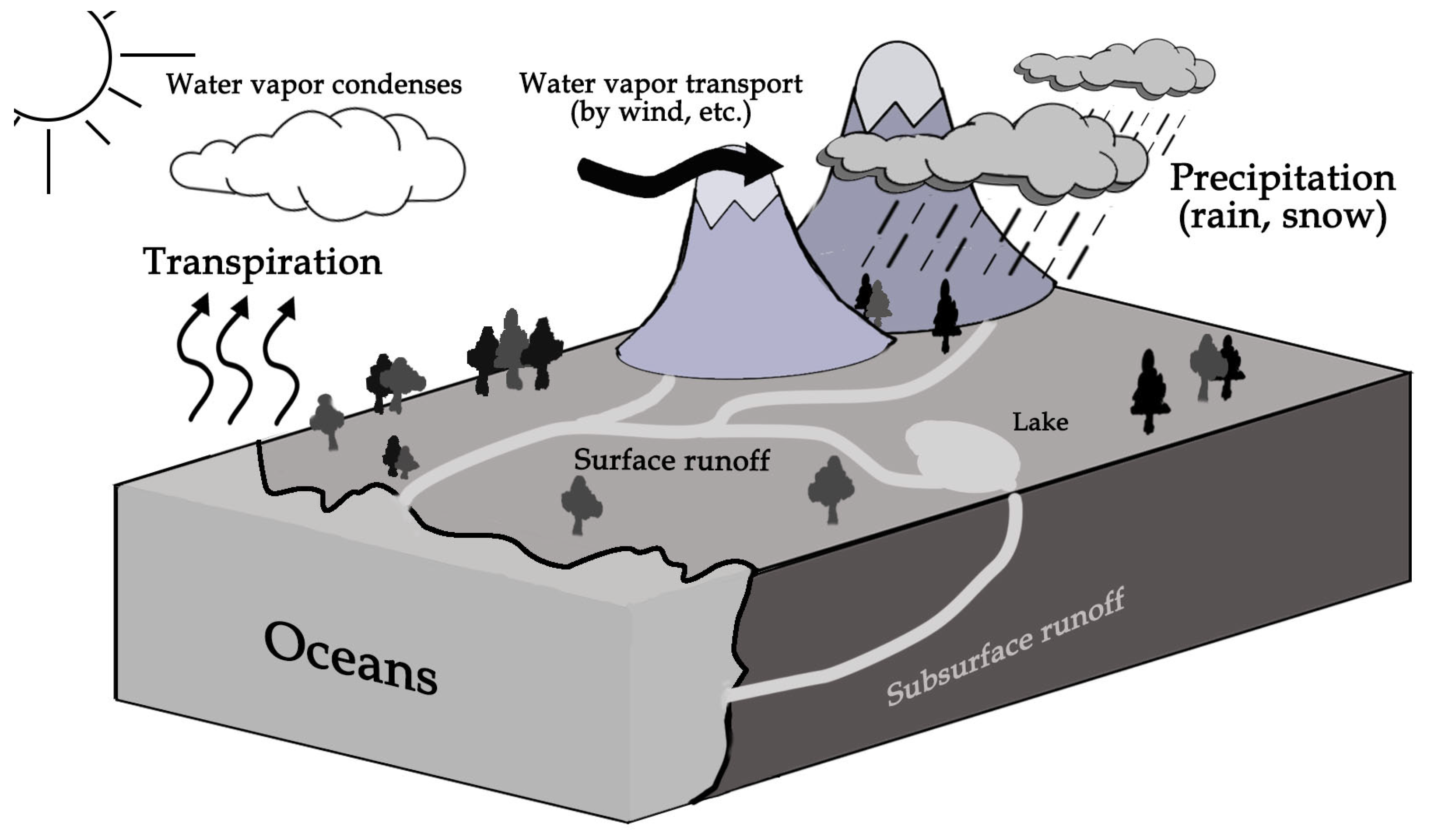
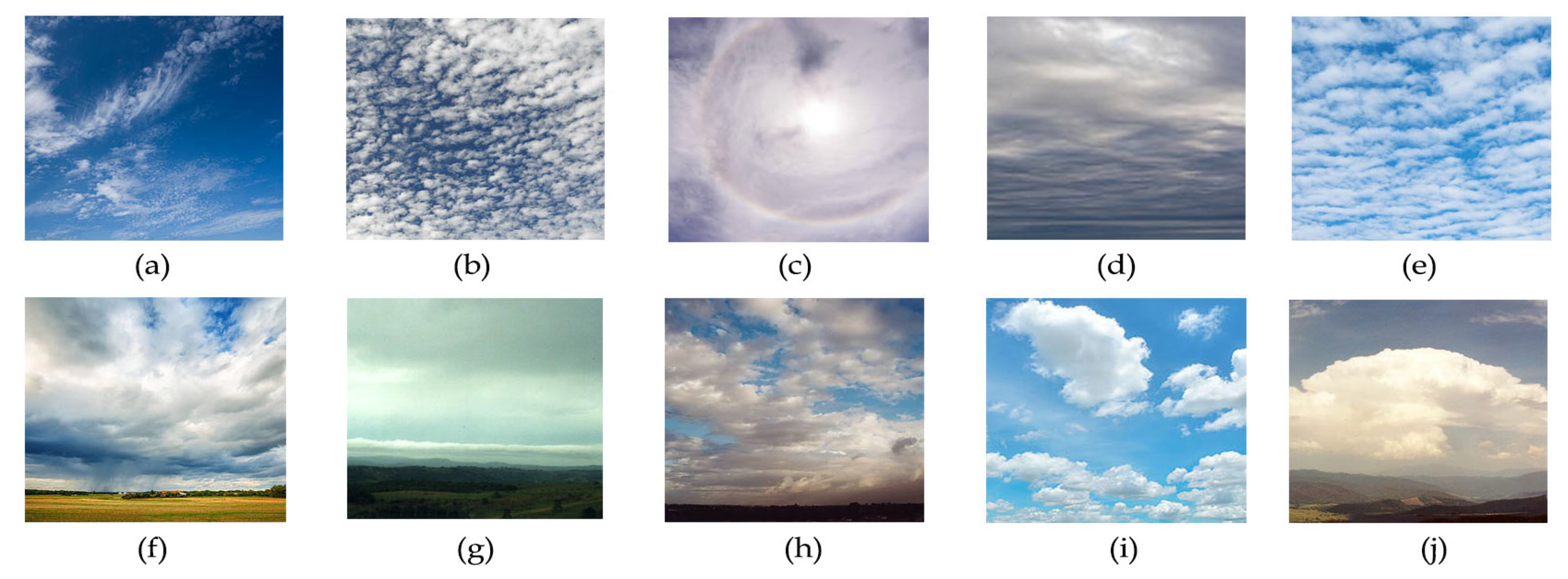
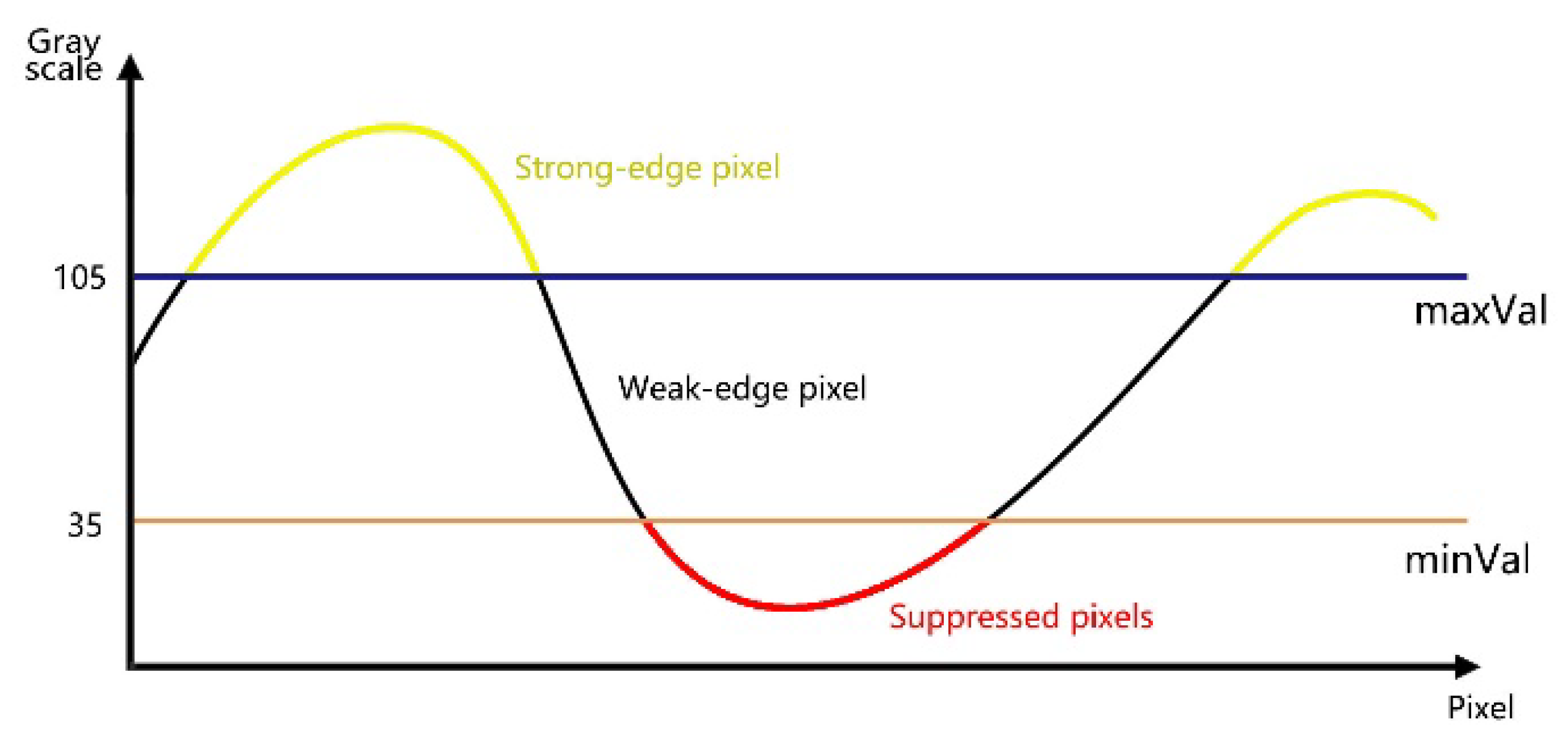
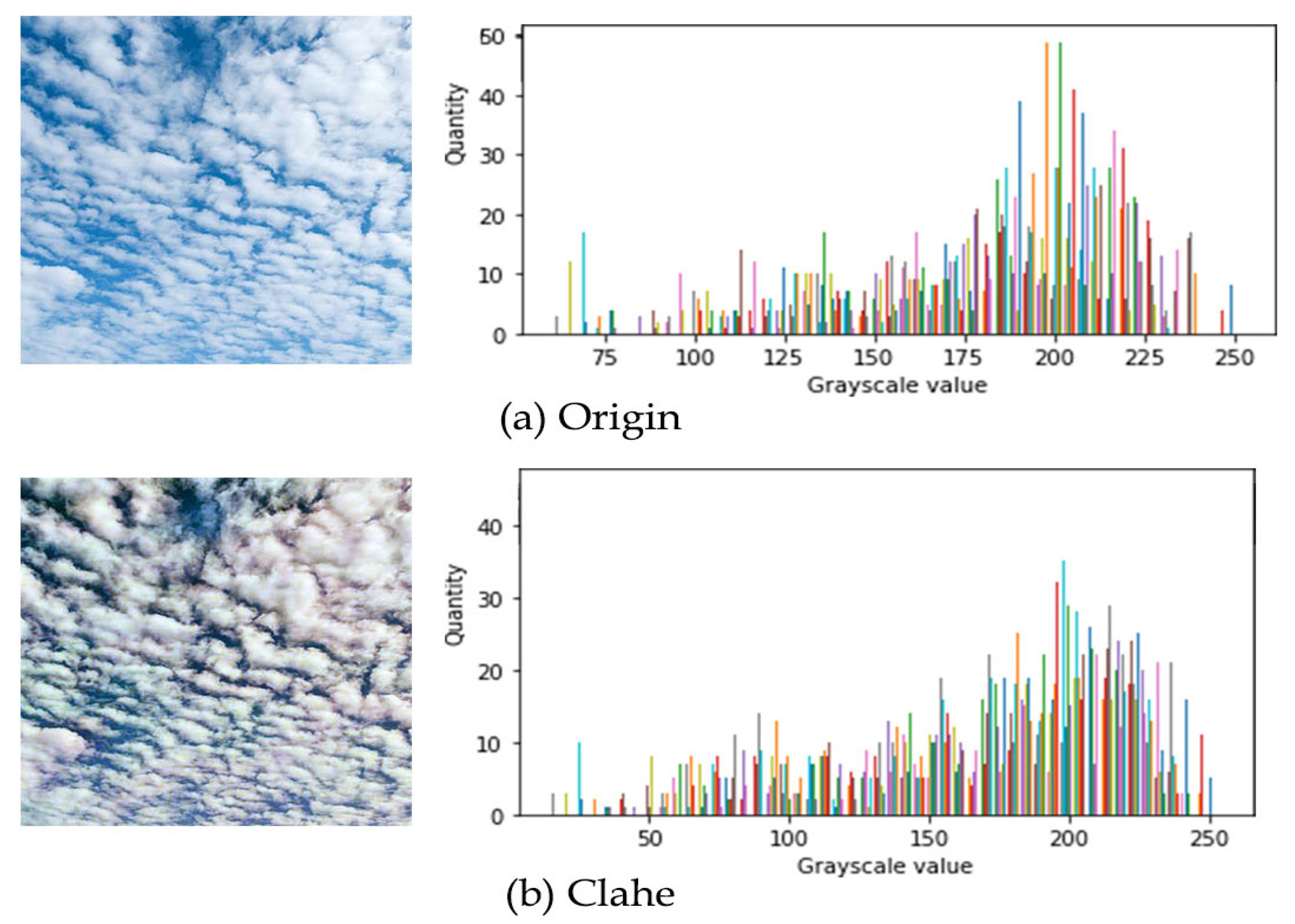
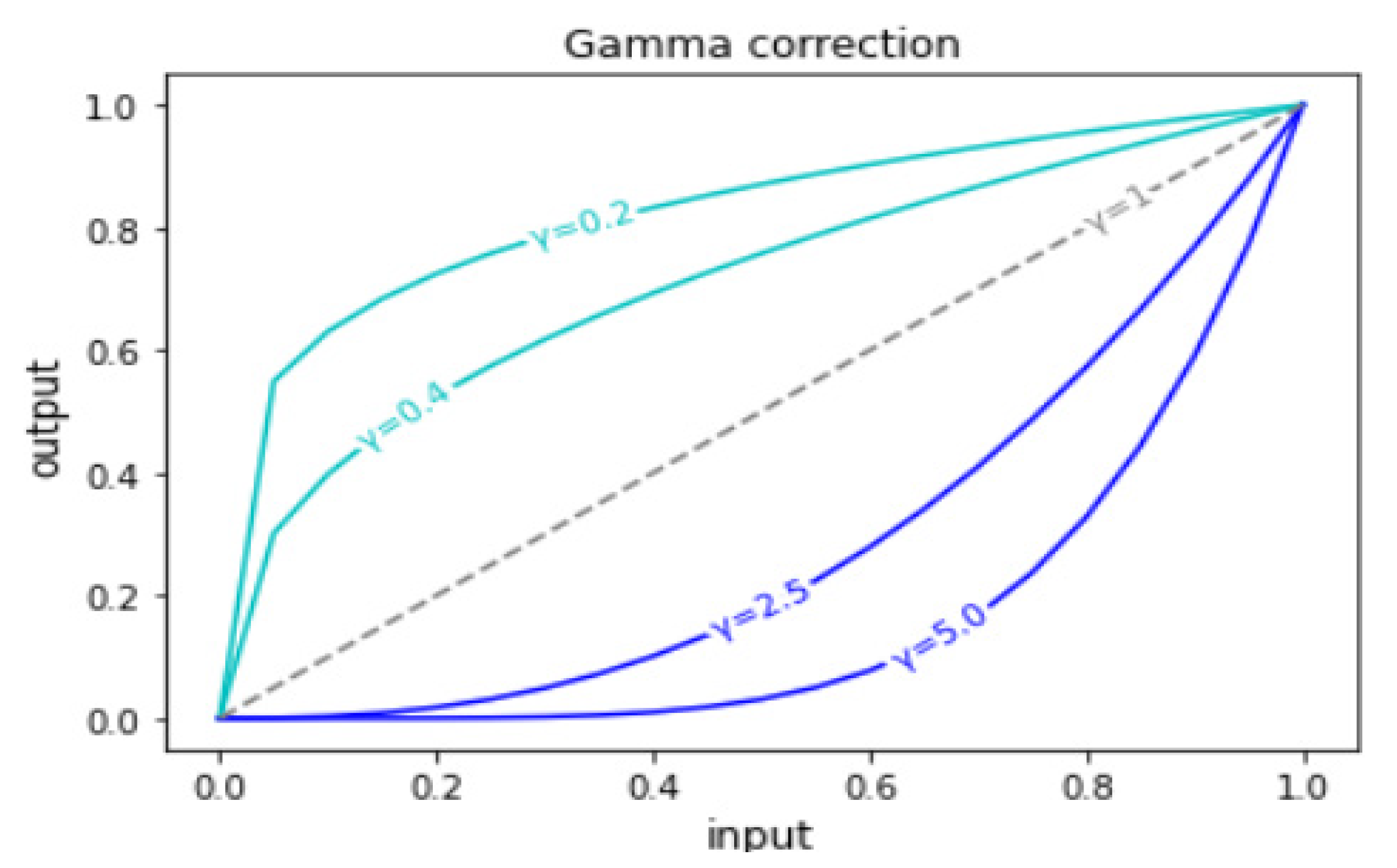
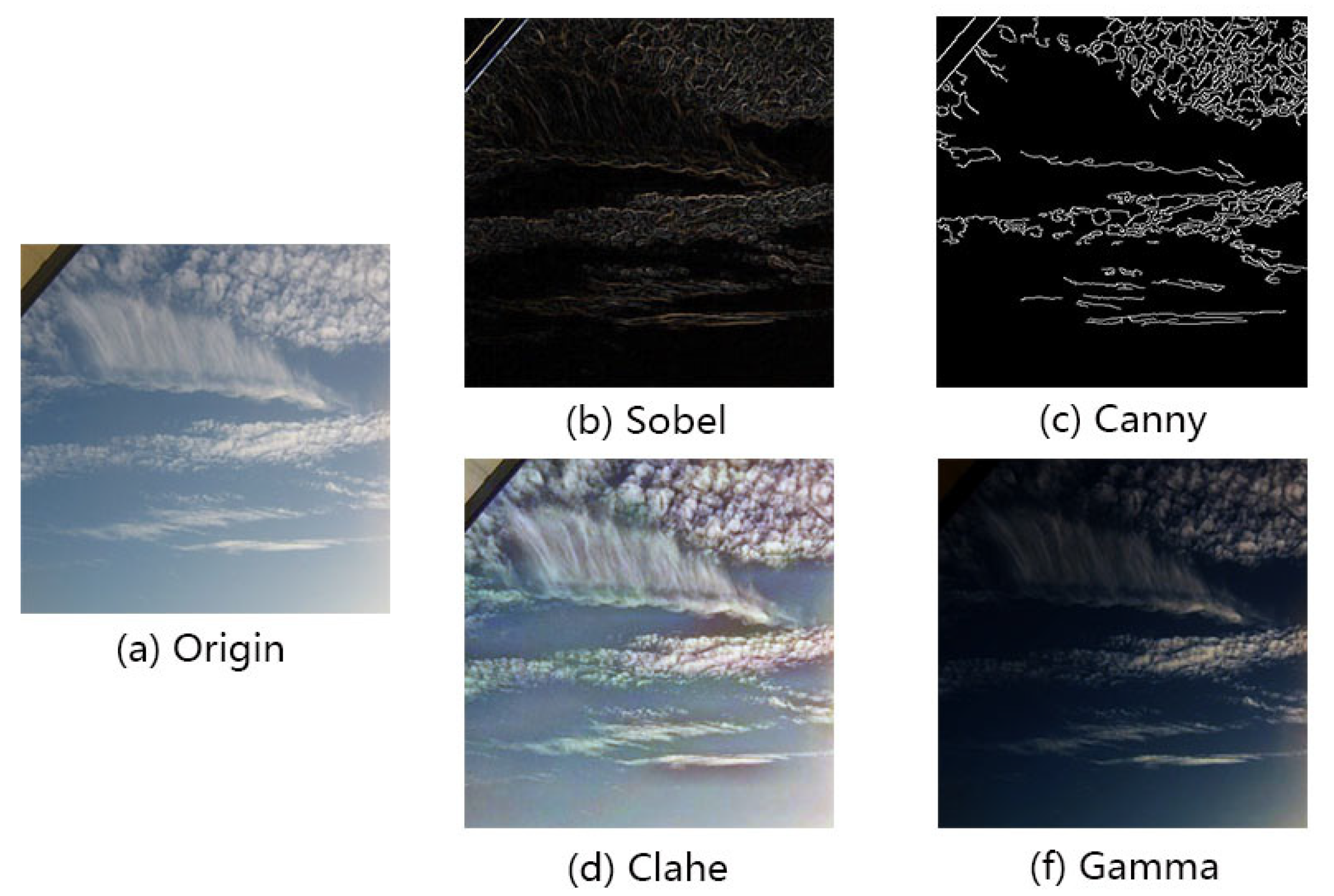


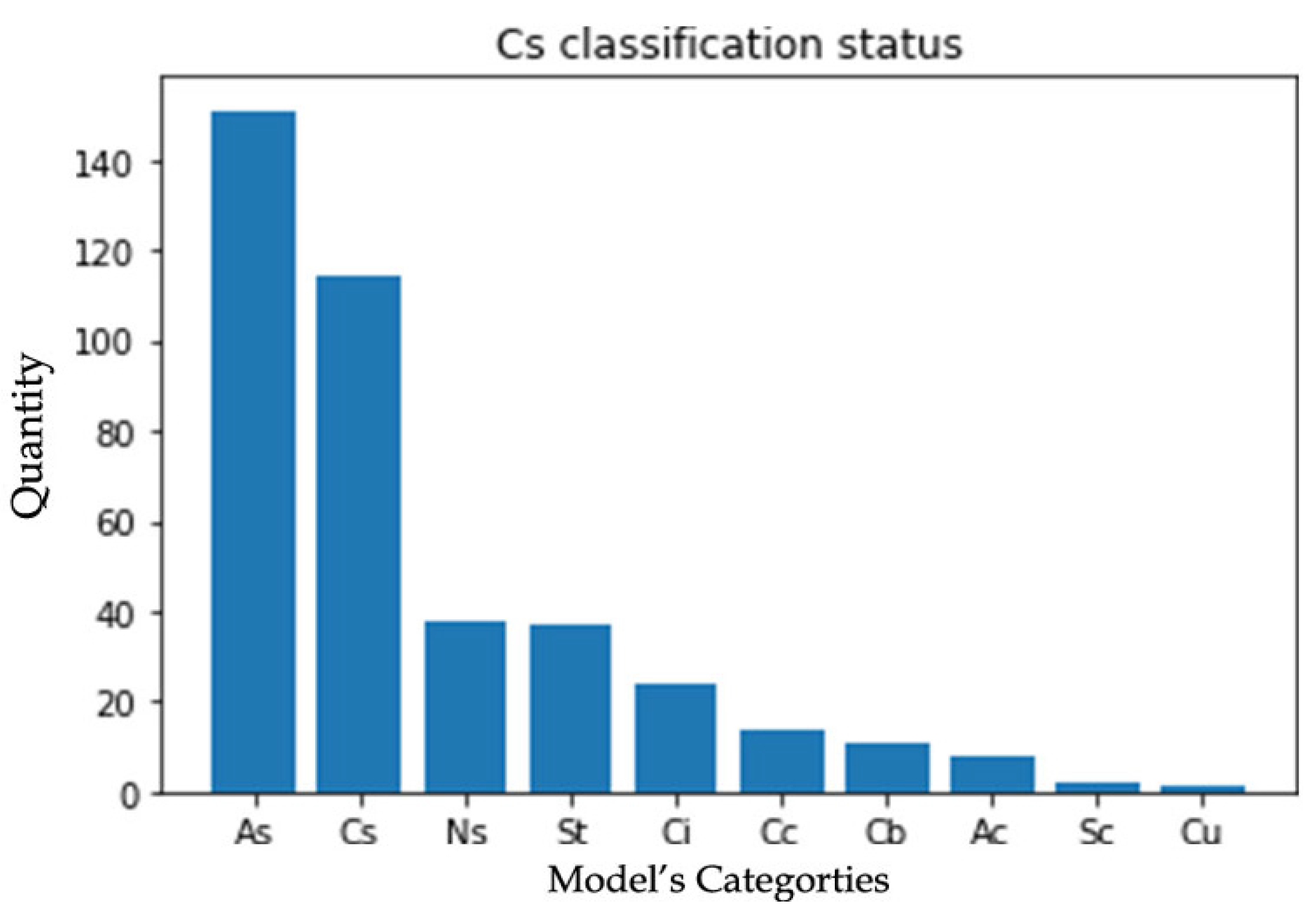
| Heigh | Cloud Genera | Texture | Quantity |
|---|---|---|---|
| High-level | Cirrus (Ci) | Stratiformis | 103 |
| Cirrocumulus (Cc) | Undulatus | 103 | |
| Cirrostratus (Cs) | Stratiformis | 110 | |
| Middle-level | Altostratus (As) | Stratiformis | 100 |
| Altocumulus (Ac) | Undulatus | 106 | |
| Low-level | Nimbostratus (Ns) | Stratiform | 133 |
| Stratus (St) | Undulatus | 102 | |
| Stratocumulus (Sc) | Undulatus | 101 | |
| Cumulus (Cu) | Cumulus | 107 | |
| Cumulonimbus (Cb) | Cumulus | 127 | |
| Total | 1092 | ||
| Categorty | Recall | Precision | F1 | Accuracy |
|---|---|---|---|---|
| AC | 0.75 | 0.83 | 0.79 | 0.78 |
| AS | 0.8 | 0.64 | 0.71 | |
| CB | 0.85 | 0.81 | 0.83 | |
| CC | 1 | 0.77 | 0.87 | |
| CI | 0.6 | 1 | 0.75 | |
| CS | 0.5 | 0.67 | 0.57 | |
| CU | 0.9 | 0.67 | 0.77 | |
| NS | 0.8 | 0.76 | 0.78 | |
| SC | 0.75 | 0.94 | 0.83 | |
| ST | 0.85 | 0.89 | 0.87 | |
| Stratiformis | 0.675 | 0.74 | 0.71 | 0.71 |
| Undulatus | 0.675 | 0.68 | 0.68 | |
| Cumulus | 0.85 | 0.71 | 0.77 |
| Categorty | Recall | Precision | F1 | Accuracy |
|---|---|---|---|---|
| AC | 0.9 | 0.6 | 0.72 | 0.8 |
| AS | 0.7 | 0.74 | 0.72 | |
| CB | 0.8 | 0.9 | 0.85 | |
| CC | 0.95 | 0.9 | 0.93 | |
| CI | 0.55 | 0.85 | 0.67 | |
| CS | 0.95 | 1 | 0.97 | |
| CU | 0.9 | 0.67 | 0.77 | |
| NS | 0.65 | 0.8 | 0.72 | |
| SC | 0.85 | 0.65 | 0.74 | |
| ST | 0.95 | 0.70 | 0.83 | |
| Stratiformis | 0.54 | 0.77 | 0.63 | 0.65 |
| Undulatus | 0.77 | 0.63 | 0.69 | |
| Cumulus | 0.78 | 0.76 | 0.77 |
| Categorty | Recall | Precision | F1 | Accuracy |
|---|---|---|---|---|
| AC | 0.65 | 1 | 0.79 | 0.72 |
| AS | 0.8 | 0.5 | 0.62 | |
| CB | 0.85 | 0.77 | 0.81 | |
| CC | 0.7 | 1 | 0.82 | |
| CI | 0.75 | 0.56 | 0.64 | |
| CS | 0.6 | 0.92 | 0.73 | |
| CU | 0.8 | 0.1 | 0.86 | |
| NS | 0.95 | 0.95 | 0.89 | |
| SC | 0.75 | 1 | 0.88 | |
| ST | 0.85 | 0.57 | 0.68 | |
| Stratiformis | 0.72 | 0.63 | 0.67 | 0.64 |
| Undulatus | 0.54 | 0.61 | 0.57 | |
| Cumulus | 0.65 | 0.68 | 0.67 |
| Categorty | Recall | Precision | F1 | Accuracy |
|---|---|---|---|---|
| AC | 0.9 | 0.9 | 0.9 | 0.71 |
| AS | 0.95 | 0.34 | 0.5 | |
| CB | 0.8 | 1 | 0.89 | |
| CC | 0.6 | 1 | 0.75 | |
| CI | 0.85 | 1 | 0.92 | |
| CS | 0.7 | 1 | 0.82 | |
| CU | 0.65 | 0.76 | 0.7 | |
| NS | 0.55 | 0.67 | 0.6 | |
| SC | 1 | 0.29 | 0.45 | |
| ST | 0 | 0 | 0 | |
| Stratiformis | 0.56 | 0.56 | 0.56 | 0.54 |
| Undulatus | 0.66 | 0.54 | 0.59 | |
| Cumulus | 0.25 | 0.5 | 0.33 |
Disclaimer/Publisher’s Note: The statements, opinions and data contained in all publications are solely those of the individual author(s) and contributor(s) and not of MDPI and/or the editor(s). MDPI and/or the editor(s) disclaim responsibility for any injury to people or property resulting from any ideas, methods, instructions or products referred to in the content. |
© 2023 by the authors. Licensee MDPI, Basel, Switzerland. This article is an open access article distributed under the terms and conditions of the Creative Commons Attribution (CC BY) license (https://creativecommons.org/licenses/by/4.0/).
Share and Cite
Li, Z.; Kong, H.; Wong, C.-S. Neural Network-Based Identification of Cloud Types from Ground-Based Images of Cloud Layers. Appl. Sci. 2023, 13, 4470. https://doi.org/10.3390/app13074470
Li Z, Kong H, Wong C-S. Neural Network-Based Identification of Cloud Types from Ground-Based Images of Cloud Layers. Applied Sciences. 2023; 13(7):4470. https://doi.org/10.3390/app13074470
Chicago/Turabian StyleLi, Zijun, Hoiio Kong, and Chan-Seng Wong. 2023. "Neural Network-Based Identification of Cloud Types from Ground-Based Images of Cloud Layers" Applied Sciences 13, no. 7: 4470. https://doi.org/10.3390/app13074470
APA StyleLi, Z., Kong, H., & Wong, C.-S. (2023). Neural Network-Based Identification of Cloud Types from Ground-Based Images of Cloud Layers. Applied Sciences, 13(7), 4470. https://doi.org/10.3390/app13074470






